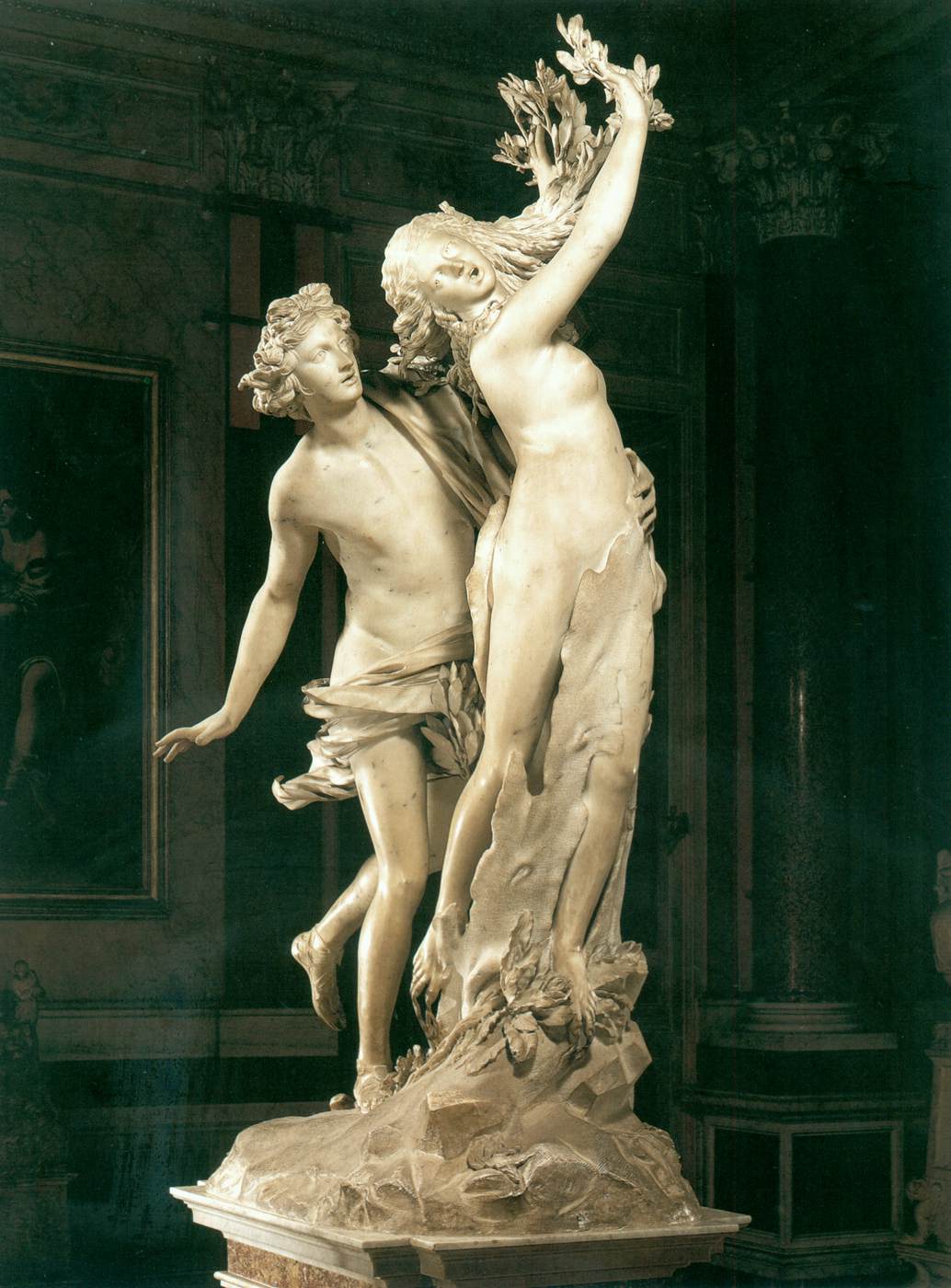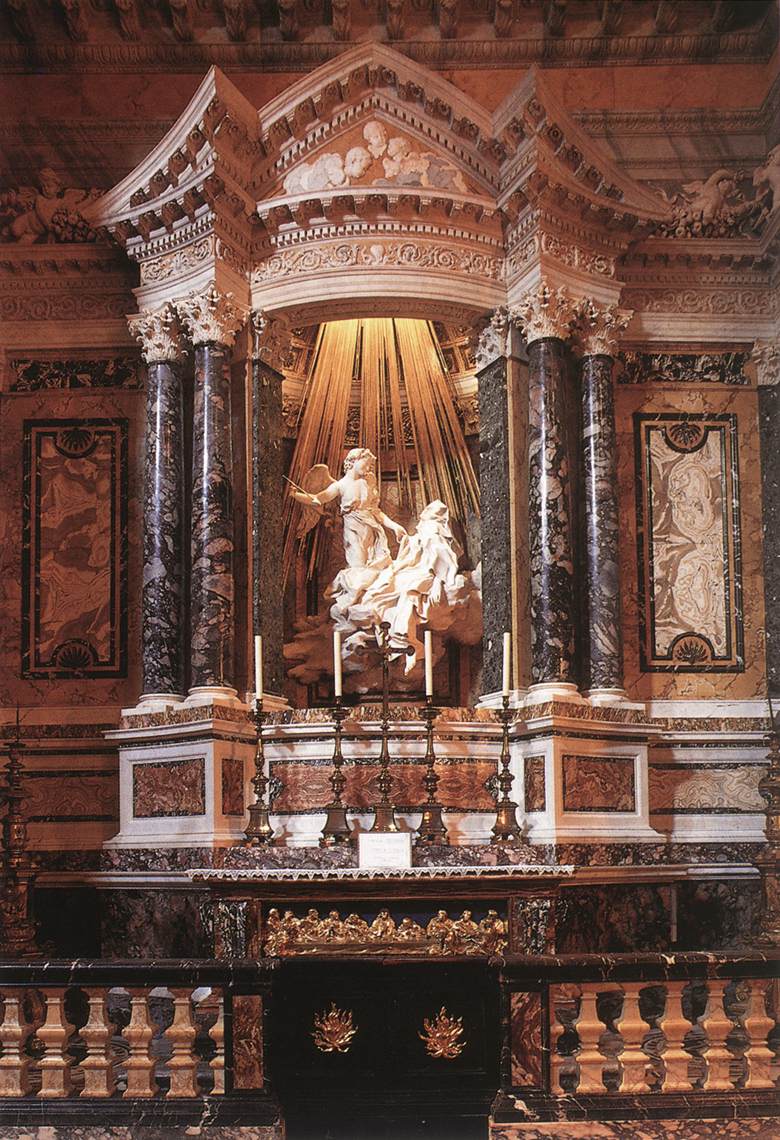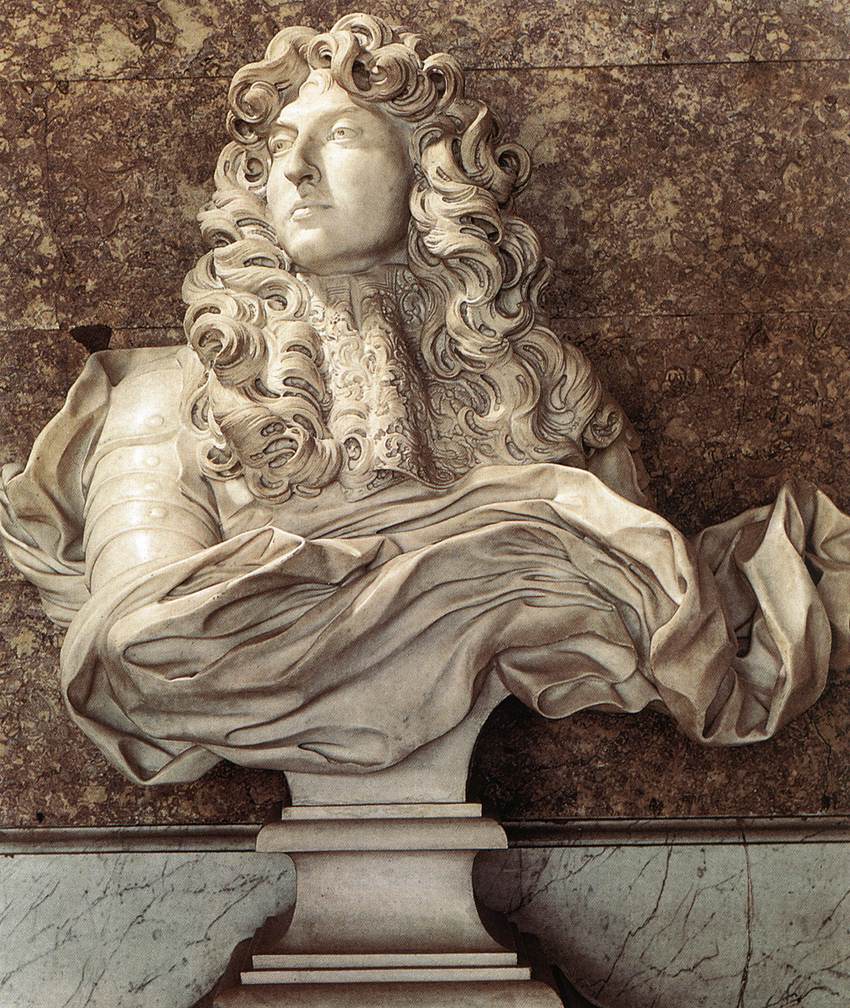Gian Lorenzo Bernini was born on 7 December 1598 in Naples. He trained with his father, Mannerist sculptor Pietro Bernini, who moved to Rome when Bernini was a young boy. His talents recognised soon after he arrived in Rome, Bernini was presented to Pope Paul V who was impressed by the youth’s skill. Bernini gained a detailed knowledge of the antique from the papal collection in the Vatican and also from his early work restoring antiquities for Cardinal Scipione Borghese’s villa collection. The soft, supple skin contrasted with the dense fur of his youthful Goat amalthea with the Infant Jupiter and a Fawn (1609-15) displays his precocious talents and close observation of nature.
Bernini’s first major works were completed under the patronage of Cardinal Scipione and remain in the Villa Borghese to this day. In this context, Bernini was forced to work with classicising themes, aware of the pressure of creating pieces which would inevitably be judged alongside genuine antiquities and works of modern masters such as Caravaggio. The early Aeneas Fleeing Troy displays a striking verisimilitude in the treatment of youth and old age, resignation and belligerent stubbornness. His more mature works such as Apollo and Daphne and David arrest the viewer in their tracks, offering hallucinatory visions of Ovidian subjects and an unprecedented treatment of the Biblical David, whose dynamic twisting leaves the beholder in no doubt that they stand in the place of Goliath.
During his most prolific years, Bernini proved himself to be a master of Post-Tridentine visual rhetoric. Powerful religious works such as the Cornaro Chapel decoration featuring the Ecstasy of St. Teresa combine painting, sculpture and architecture, even natural light, to create a tour-de-force which overloads the senses. The message is clear and readily-understood: The Catholic faith offers unparalleled spiritual union with God. Bernini’s architecture, with its anthropomorphising features, created of Counter-Reformation Rome a new vision of the Kingdom of Heaven on Earth.
Outside the realms of religious art, however, Bernini enjoyed a hugely successful career. He is credited with the invention of the Baroque portrait bust and was sought-after as a portraitist as far as France. In 1665, Bernini was invited to France to redesign the Louvre, a project never brought to fruition, but while there King Louis XIV requested that the artist sculpt a portrait of him. Like Bernini’s other portrait busts, the result is more a generalised depiction of authority and power than a direct likeness. Just like in his religious works, the sculptor captivates the beholder through movement, expression and innovation.
Reference: Genevieve Warwick, Bernini: Art as Theatre, New Haven: Yale University Press, 2012.
Goat amalthea with the Infant Jupiter and a Fawn, 1609-15, marble, Galleria Borghese, Rome.
Aeneas Fleeing Troy, 1618-19, marble, Galleria Borghese, Rome.
Apollo and Daphne, 1622-25, marble, Galleria Borghese, Rome.
David, 1623-24, marble, Galleria Borghese, Rome.
Cornaro Chapel, 1647-52, marble, Santa Maria della Vittoria, Rome.
The Ecstasy of St. Teresa, 1647-52, marble, Santa Maria della Vittoria, Rome.
Bust of Louis XIV, 1665, marble, Musée National du Château, Versailles.
(Images: Web Gallery of Art)
Further Reading: Andrea Bacchi & Anna Coliva eds., Bernini, Milan: Officina Libraria, 2017.






